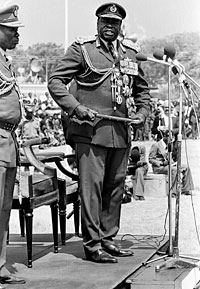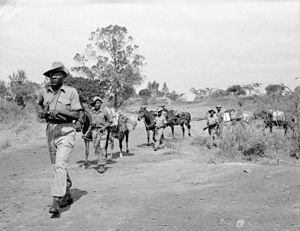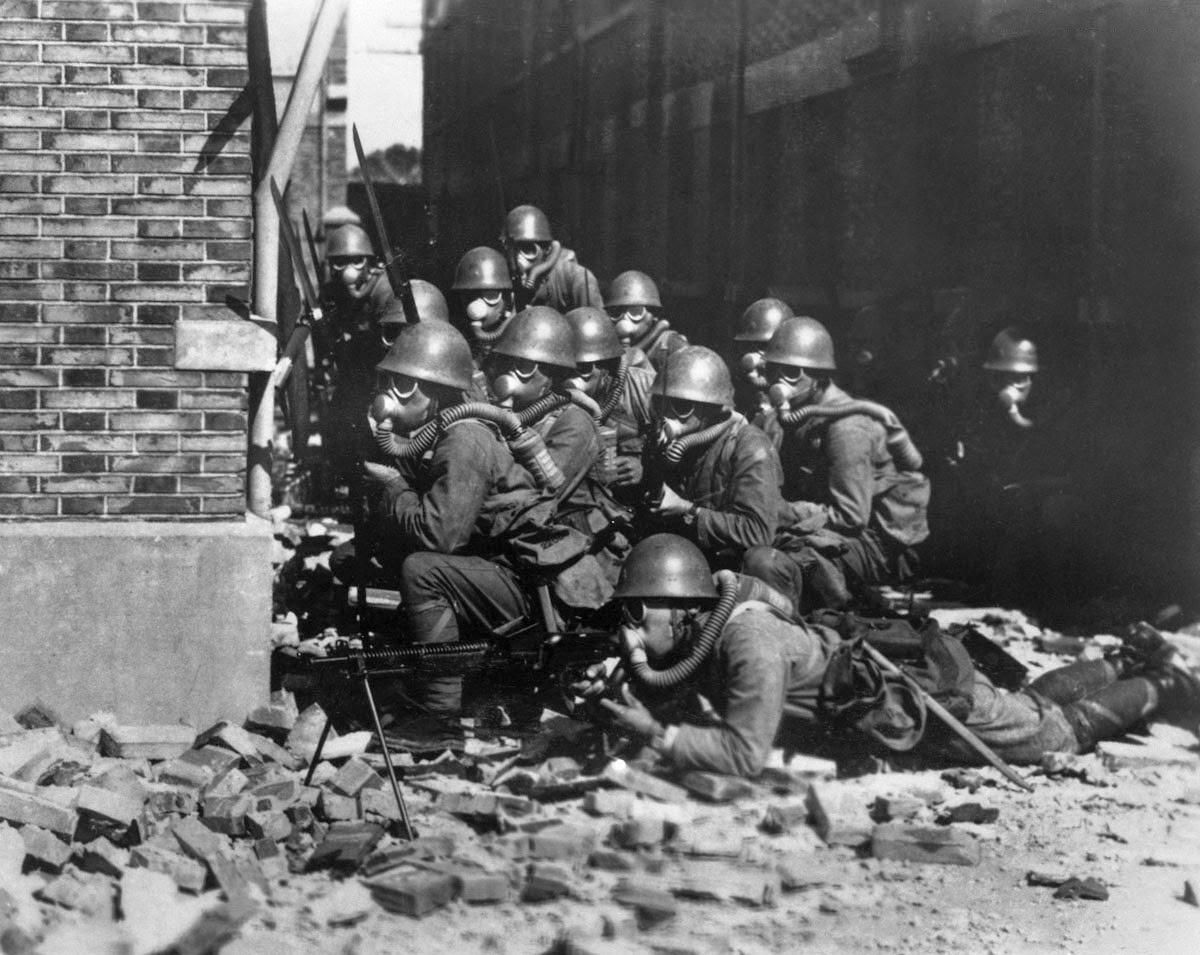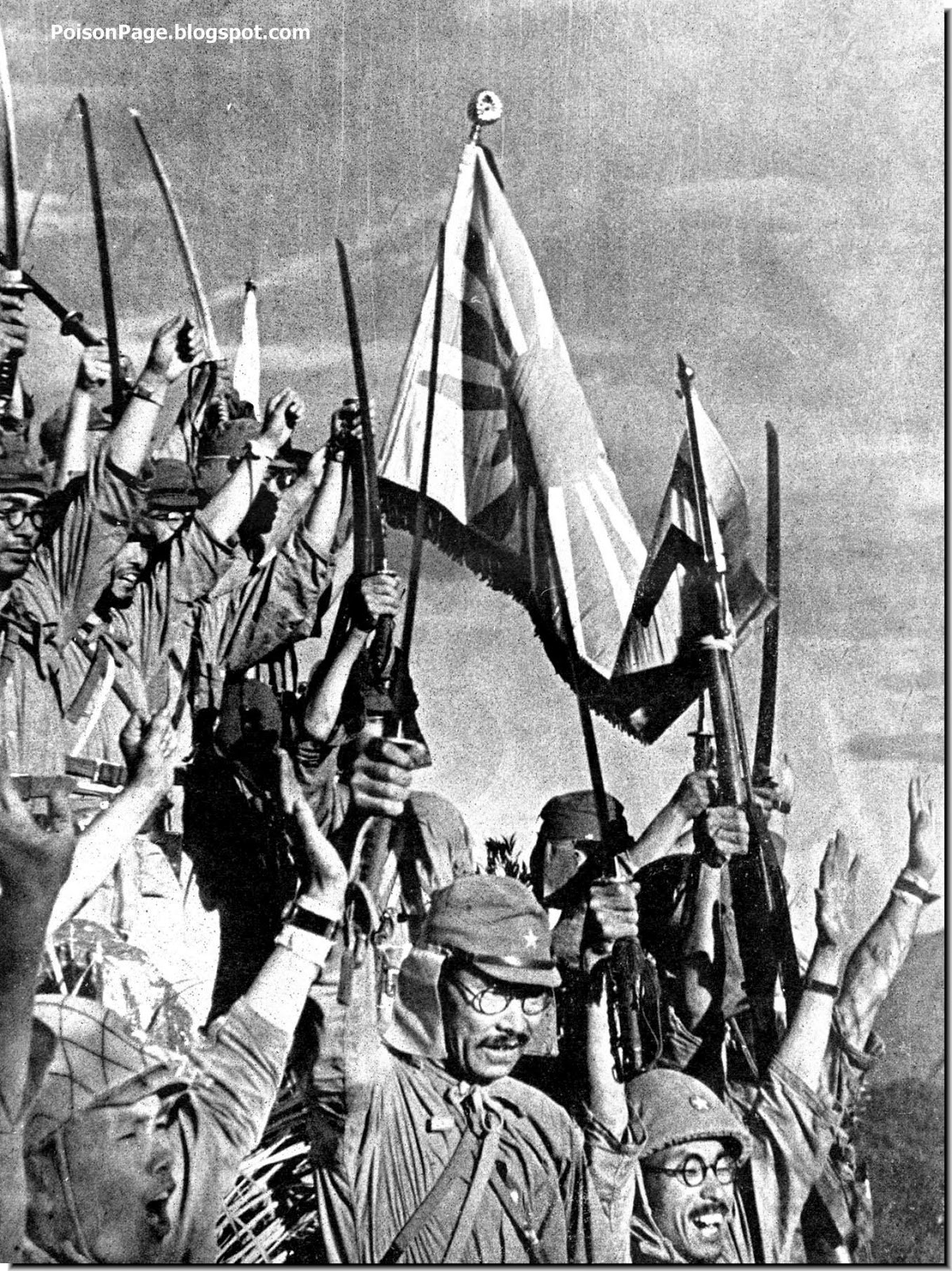Challenges to Japanese Colonial Rule in East Coastal Africa: The Mau Mau Emergency Conflict
Soldiers belonging the Imperial Japanese Colonial Security Force-Kenya (IJCSF-K) on patrol and keeping an eye out for any Mau Mau rebels (circa 1950).
The Mau Mau Emergency Conflict (1949-1956), also known as the Mau Mau Rebellion, the Kenya War, and the Great Mau Mau Revolt, was a two-part war in the Japanese Kenya Colony (1948-1970). In the first part, the Mau Mau (dominated by the Kikuyu, Meru, and Embu peoples & also compromising of, the Kamba and Maasai peoples) fought against the British colonist-settlers in Kenya starting in 1947 and continued into 1948 when it became evident that their British colonial masters would be defeated by the Greater Japanese Empire.
Japanese machine gun team fire their heavy machine gun at Mau Mau rebels.
In July 1948, Britain surrendered to Japan and handed over its African colonies in the north of the African continent to Japan's ally Italy and
all of its Sub-saharan colonies to Japan – the first part of the war ended. At first the Mau Mau greeted the Japanese as liberators, especially when they (the Japanese) expelled all Anglos from Kenya. However, as the Japanese zaibatsu started to exploit Kenya’s natural resources (often times through the use of forced labour) and Japanese settlers started to arrive, the Mau Mau soon realised they had traded one colonial master for another.
In the Spring of 1949, the Mau Mau (who had hidden their weapons all across the countryside, which were either British-made or ironically supplied by the Japanese during its war against Britain) started to attack the Imperial Japanese Army garrisons in Kenya, the Kenya Protection Corps*, and the Imperial Japanese Colonial Security Force-Kenya** – the second part of the war had begun.
General Yoshijirō Umezu.
The Japanese senior commanding officer charged with defeating the Mau Mau, General Yoshijirō Umezu, initally believed the insurgency to be totally disorganised....he was proven wrong with the Mau Mau coordinating ambushes and raids against the Japanese with quick deadly efficiency. Towards the end of the rainy season in 1953, the Mau Mau launched a coordinated large scale attack on nearly all of the colony's major cities – this caught the Japanese completely off guard, allowing the insurgents to make serious gains (albeit temporary for the Japanese never again underestimated the Mau Mau after the 1953 Rainy Season Offensive and were able to reverse their enemies' gains).
Japanese marines, wearing gas masks and rubber gloves, wait for poison gas to be deployed during the Battle of Nairobi (part of the Rainy Season Offensive).
The conflict would be noted for its extreme nastiness: the Mau Mau and Japanese both executing POWs, atrocities against civilians committed by both factions not being unheard of (the Mau Mau had a particularly cruel method of slowly killing Japanese settlers by hanging them on trees from their skin to scare off Japanese soldiers, while the Japanese would commit massacres of entire villages suspected of harbouring Mau Mau), and the Japanese usage biochemical weapons against the rebels, sympathisers, and native Kenyans being not all that uncommon either.
Japanese forces cross a river as they enter Mau Mau-held territory (circa 1954).
The conflict would end when the leadership of the Mau Mau was finally located and killed by a group of mysterious assassins.
Japanese troops celebrate their final victory over the Mau Mau insurgency in 1956.
The Mau Mau Emergency Conflict would also introduce the Japanese to a native soldier from their Uganda colony who had a natural talent for warfare, incredible strength, and exceptional brutality....
—————————————————————
* = Japanese colonist volunteers forming paramilitaries to guard against Mau Mau attacks.
** = local auxiliary militia made up of pro–Japanese Kikuyu and other pro-Japanese Kenyan ethnicities.









/https://public-media.smithsonianmag.com/filer/4e/b0/4eb0a325-43b3-4f04-9750-ddf9c48925a5/42-28866967.jpg)







